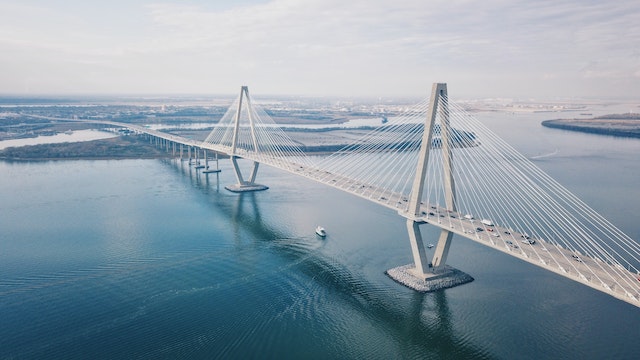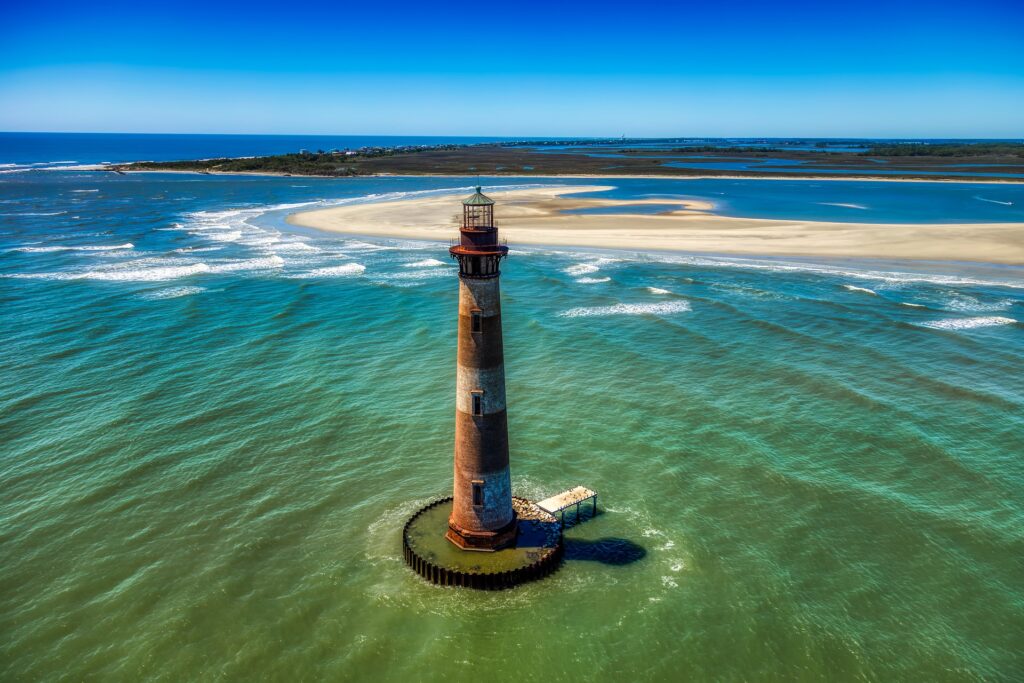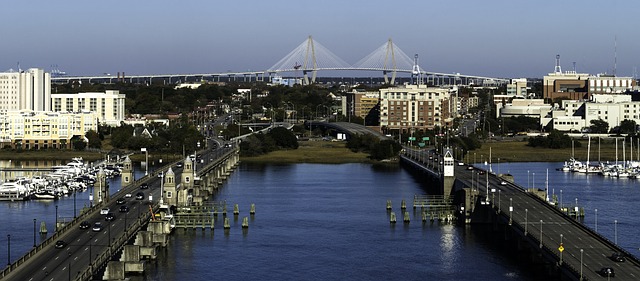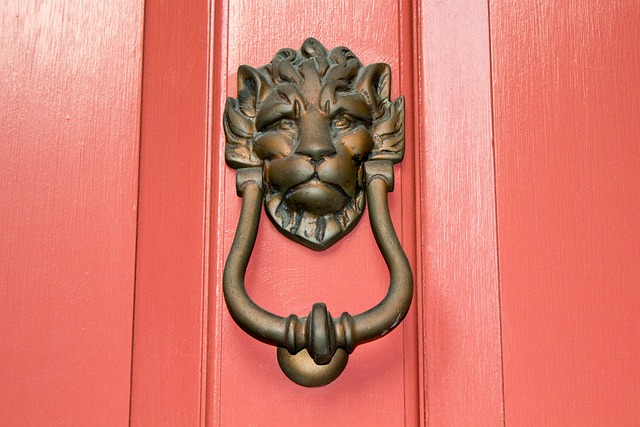Charleston is known for a lot of things—its history, culinary tradition and waterfront living to name a few. But, there are a lot of lesser-known facts about the city as well. How much do you know about Charleston? Here are 10 little-known statistics about the Holy City.
By the Numbers: 10 Statistics About Charleston
How many of these statistics about Charleston did you already know?
1. Number of Public Beaches: 5
Charleston has five main public beaches. They are all located on barrier islands, connected to the mainland by scenic bridges. No matter where you live in the Charleston area, all of these beaches are accessible within about an hour’s drive, if not significantly less:
- Edisto Beach
- Folly Beach
- Isle of Palms
- Kiawah Beach
- Sullivan’s Island
These beaches are all accessible by car, and this makes them the five main public beaches in the Charleston area. But, for those who are more adventurous, there are several smaller and more secluded beaches that are only accessible by water. If you own a boat or kayak (or rent one for the day), or if you take a tour with one of the local charter companies, you can also visit less-traveled beaches including Capers Island, Bulls Island, Morris Island, and Seabrook Island (while Seabrook is connected by road, the public area of Seabrook is only accessible by boat on the North Edisto River).
2. Elevation Above Sea Level: 19.69
Charleston and the surrounding area are referred to as the Lowcountry for a reason. At its highest natural point, Charleston is just 19.69 feet above sea level. The Charleston Peninsula is surrounded by water, and at high tide the water in Charleston Harbor can rise to the top of the Battery. Many of Charleston’s neighborhoods are at, or just above, sea level, and there are waterfront homes on rivers, creeks, and marshes throughout Mt. Pleasant, West Ashley, James Island, Johns Island, Daniel Island, Ravenel, and other areas.
3. Height of the Ravenel Bridge: 575
The Artur Ravenel Jr. Bridge (known to locals simply as the Ravenel Bridge) dominates the city’s skyline. At 575 feet above sea level, the bridge’s two instantly recognizable diamond-shaped cable stay towers are the tallest structures in Charleston. Construction on the Ravenel Bridge was completed in 2005, and it was built to replace the aging John P. Grace Memorial Bridge which, with a clearance of 155 feet, was becoming too small for the increasingly large cargo ships coming into Charleston Harbor to unload at the Port of Charleston.
Other statistics on the Ravenel Bridge include:
- Clearance Below: 187 feet
- Total Length: 2.5 miles (approximate)
- Longest Span: 1,545 feet (between the two cable stay towers)
- Water Depth Below: 52 feet (minimum)
- Number of Runners for the Annual Cooper River Bridge Run: 30,000+
Walking, running, or biking across the Ravenel Bridge is a popular activity among residents and visitors alike. Standing on the pedestrian lane on the east side of the bridge, you can look almost 200 feet down on the water and see all the way to the jetties and the Atlantic Ocean. The Annual Cooper River Bridge Run crosses the bridge from Mt. Pleasant to downtown and is one of the largest 10k road races in the United States.

4. Movies and TV Shows Filmed: 60+
At last count, Wikipedia listed 60 TV shows and movies filmed in the Charleston area. This includes recent additions such as HBO’s The Righteous Gemstones and Netflix’s Outer Banks, as well as classics like Die Hard with a Vengeance, The Patriot, The Notebook, and Major League: Back to the Minors. Residents and visitors can drive by filming locations downtown, in West Ashley (where many scenes in The Righteous Gemstones and Outer Banks were filmed), and in various neighborhoods around Charleston.
5. Professional Sports Teams: 3
Many people are unaware that Charleston is home to three professional sports teams. The most well-known of these teams is the Charleston RiverDogs, a minor league baseball team that plays at Joe Riley Stadium (known to locals as “the Joe”) downtown. The Charleston Battery are a professional soccer team that plays at Patriots Point in Mt. Pleasant, and the Charleston Stingrays are a professional ice hockey team that plays in North Charleston.
While taking in a RiverDogs game might not be quite the same experience as visiting Yankee Stadium or Camden Yards, it is a unique experience unto its own. Parking is easy, tickets are inexpensive, and most seats in the Joe have a background view of the Ashley River over the outfield wall. Charleston Battery games are a fun family experience as well, with general admission seating at field level (get to most games 15 minutes early and you can sit in the front row) and food trucks instead of traditional food stalls.
6. Major Colleges and Universities: 4
There are four major colleges and universities in Charleston. These are The Citadel, the College of Charleston (C of C), the Medical University of South Carolina (MUSC), and Charleston Southern University (CSU). The College of Charleston is the largest of these schools by far, with a student population of more than 11,000, many of whom live on campus in downtown Charleston. The Citadel and MUSC’s main campus are located downtown as well, while CSU’s campus is in North Charleston.
7. Lighthouses: 2
There are two lighthouses located in Charleston, both at the entrance to Charleston Harbor. However, only one of these lighthouses remains in operation today. The Morris Island lighthouse was decommissioned in 1962—and it was replaced by Charleston’s one operational lighthouse on Sullivan’s Island. This lighthouse, called the Charleston Light, is operated by the National Park Service; and, while visitors can view the outside of the lighthouse up close from the beach, visitors are not permitted to climb the Charleston Light’s stairs.
The Morris Island lighthouse is located on its namesake island, located at the northern tip of Folly Beach. It is accessible by boat or kayak (with tours visiting the island frequently), and Morris Island is often referenced as a good place to look for sharks’ teeth and less-common seashells.
While there are only two lighthouses in Charleston, there are a few more in the surrounding areas. These include the Hunting Island Lighthouse in Beaufort (which visitors can pay to climb the 167 stairs to the top), Haig Point Range Lights on Daufuskie Island, and Cape Romain Lighthouse north of Bulls Bay.

8. Miles of Coastline: 90
According to Charleston County, the Charleston area has 90 miles of coastline. This is in addition to close to 200 miles of rivers and creeks that wind their way through the Lowcountry. The coastline is made up primarily of public beaches, although there are private beach areas and protected wilderness areas on many of Charleston’s barrier islands as well.
Along with Charleston’s coastline, rivers, and creeks, the Charleston Harbor is a world-renowned destination for blue water sailors. The Intracoastal Waterway runs through Charleston as well, weaving its way around the tip of the Charleston peninsula. Charleston Harbor is also the deepest harbor on the East Coast of the United States at 52 feet, making it a key destination for cargo ships traveling from around the world.
9. Non-Stop Flight Destinations: 30+
There are currently more than 30 non-stop flight destinations (and arrivals) into Charleston International Airport (CHS). CHS is currently in the beginning phases of a 20-year master plan to expand with a new “C” concourse that will add 11 gates, along with more parking and dining options. The airport has consistently added new non-stop destinations in recent years, both with major airlines like Delta, Southwest, United and American Airlines and with smaller carriers like Allegiant and Breeze Airways.
10. Population of Charleston: 150,000+
Currently, Charleston’s population stands at just over 150,000 full-time residents. This makes Charleston the largest city in the state, slightly surpassing the state capital of Columbia. Cities with a similar population include nearby Savannah, as well as other small cities around the country like Huntsville, Tempe, and Fort Lauderdale.
However, the greater Charleston area has recently grown in population to nearly 800,000. This includes the tri-county area of Berkeley, Charleston, and Dorchester County. This makes the greater Charleston area the 74th largest metropolitan area in the United States (as of 2023).

More Interesting Facts About Charleston, SC
So, those are some Charleston statistics that most people don’t know. Now, here are some additional interesting facts about Charleston, SC:
- When you visit Charleston, you will notice several pineapple sculptures and motifs. Why? The pineapple is a symbol of hospitality that dates back to the city’s origins as a maritime hub.
- The famous story of the pirate Blackbeard is a true story about Edward “Blackbeard” Teach who held local citizens hostage while seeking to purloin medicines from the city’s apothecaries.
- Charleston was the site of many “firsts” in the United States. For example, the Dock Street Theatre downtown is America’s first theatre (and is still in operation today), and the city’s Harleston Green is widely considered to be the “birthplace of American golf.”
- The Civil War started in Charleston. On April 12, 1861, Confederate soldiers fired on Union forces stationed at Fort Sumter in the Charleston Harbor. As noted by the U.S. Senate, “this event has been used to mark the beginning of the Civil War.”
- The Charleston area is home to the United States’ “Antebellum Atlantis.” About a half a mile offshore just north of Edisto Island sits the former settlement of Edingsville Beach. Today, fragments of brick, pottery, and other relics still wash up on the shore.
Did you like this article? Subscribe to get notified of new articles via email.
